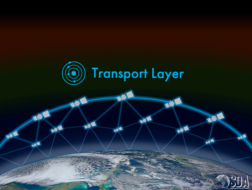As commercial and scientific traffic picks up in space from actors around the world, the US military space community has spent 2024 making sure they’re prepared to secure the flourishing domain.
Here are some of the national security space highlights of the year:
Hazy: In April, Space Systems Command unveiled its latest responsive space demo dubbed VICTUS HAZE. During the RPO mission, which is set for fall 2025, spacecraft from Rocket Lab and True Anomaly will attempt to approach and inspect each other.
Orbital drift: The Pentagon’s secretive X-37B spaceplane conducted an aerobraking maneuver in October for the first time in orbit, using atmospheric drag to shift its orbit and dispose of its service module. The spaceplane, which launched in December 2023, is still in orbit on its seventh mission. Its sixth record-setting mission lasted 908 days.
Blueprint: The Defense Department released its first Commercial Space Strategy in April. The document laid out a plan for boosting cooperation between the Pentagon and the private sector, including adding companies to DoD wargames and sharing threat information to protect commercial assets in orbit.
Russian nukes: In February, news broke that Russia was pursuing a nuclear anti-satellite capability. While the technology obviously has big ramifications for security and peace in space, the way the news came out—Rep. Mike Turner (R-OH) publicly alluded to a “serious national security threat” and forced the White House to share more details—was also a departure from the norm in the highly classified and generally bipartisan space sector.
Budget dip: The Space Force requested $29.4B in its fiscal 2025 budget request, the first time in the service’s five years that it’s asked for less than the year before. Advocates slammed the proposed cut, saying that the service needed more money to protect space assets and compete with China. The final spending number is up to Congress, and is still TBD, as the government is working under a continuing resolution.
Offload: The Office of Space Commerce launched the initial phase of its space traffic management system to a group of beta testers, marking the first step to taking the tracking mission for commercial operators off DoD’s to-do list.
Overseas: The Space Force opened a service component in Japan this month, highlighting the importance of the IndoPacific region to the DoD. The Japanese field component will provide space support to joint forces in Japan.
AI: Following in the footsteps of other agencies and the private sector, DoD is exploring the use of AI—and industry took notice. Defense tech firm Anduril announced that it was jumping into the space game to offer its AI software to national security space users, and DARPA partnered with Slingshot on an AI tool to spot bad actors lurking in megaconstellations.
Newcomers: The year saw traditional space businesses become more involved in the national security space sector, including ABL, which pivoted away from launch after a failure to pursue missile defense tech, and Astrobotic, which pitched its lunar PNT system to the DoD to help troops operating in a GPS- degraded environment.
On the horizon: The Defense Department made investments into a few emerging space tech industries in 2024, including:
- Tasking Starfish Space to build an Otter spacecraft for RPO operations
- Approving Northrop Grumman and Orbit Fab tech to refuel military sats
- Awarding Varda a contract to test DoD payloads on its reentry capsules
- Exploring the use of orbital transfer vehicles to move satellites between orbits




